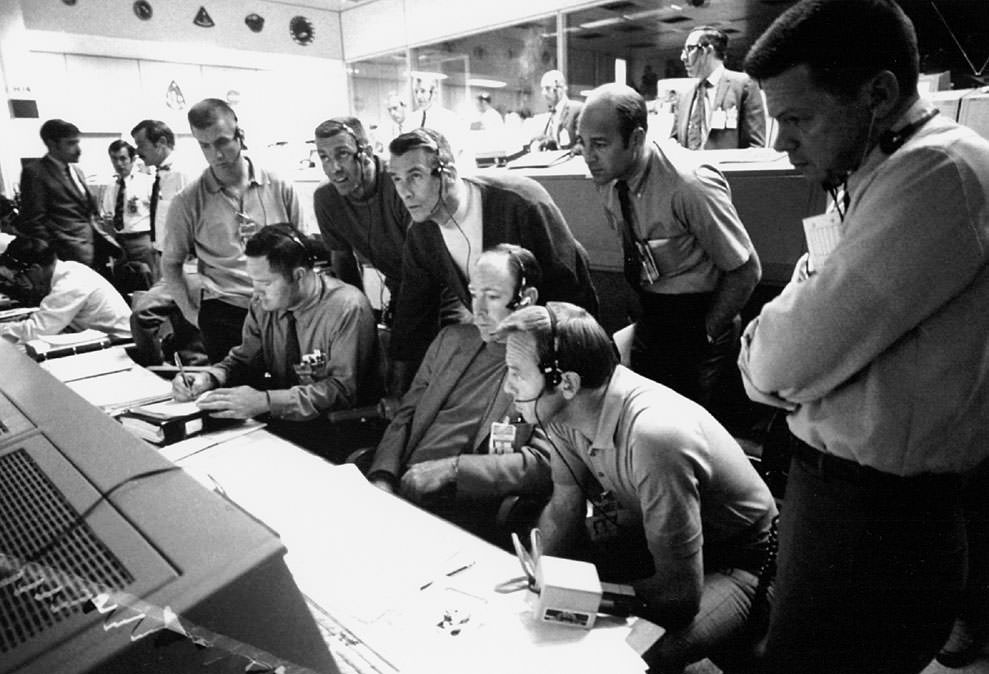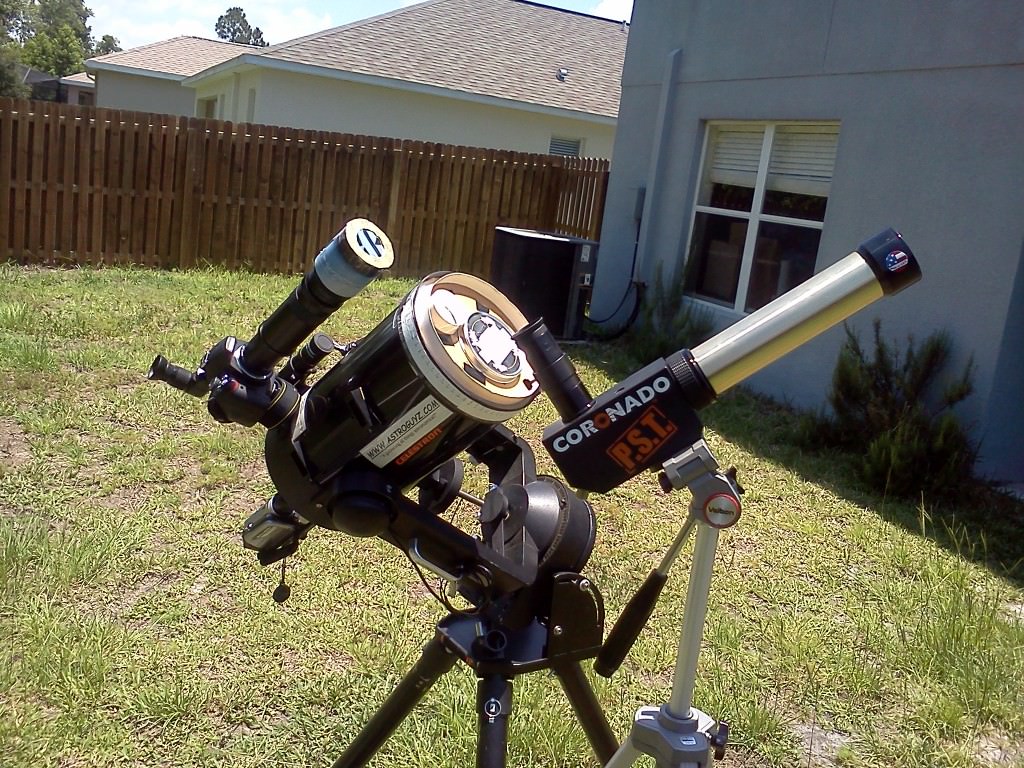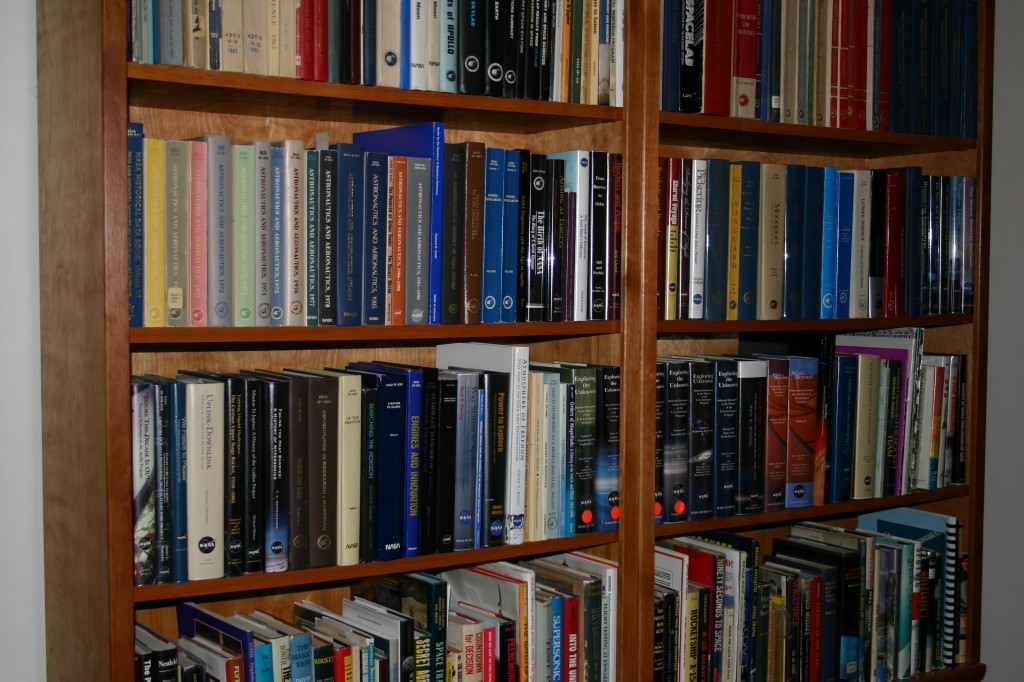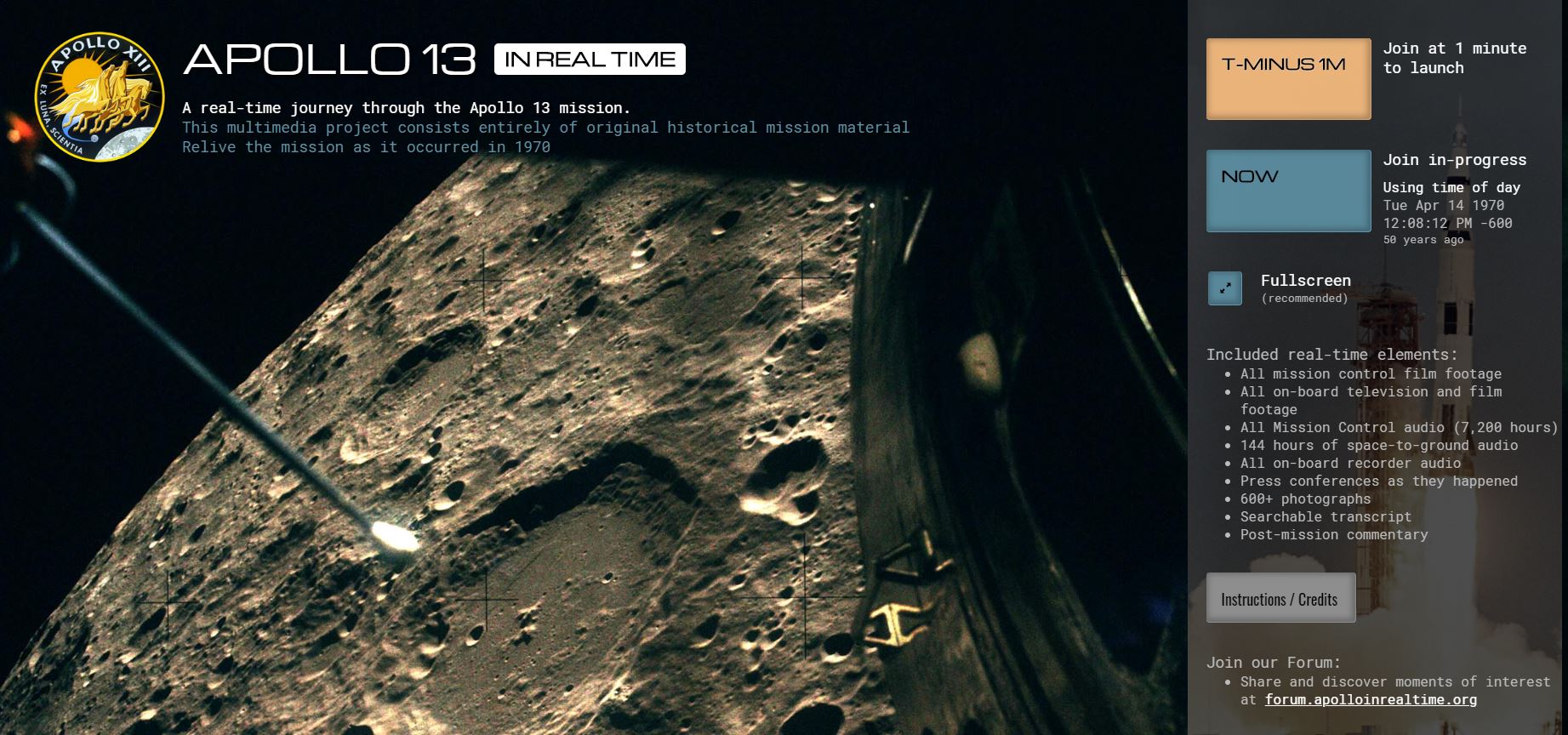We’re in uncharted territory as the world faces the Coronavirus (COVID-19) pandemic. While the medical community is on the front lines of dealing with this, as well as others who provide critical services in our communities, the best thing many of us can do is to stay home (and wash our hands).
If you’re looking for ways to keep occupied, keep your kids in learning-mode while school is canceled, and expand your horizons — all at the same time — luckily there are lots of space and astronomy-related activities you can do at home and online. We’ve compiled a few of our favorites, including this first one, one that just became available yesterday.
Re-live Apollo 13 in Real Time
If you’re feeling like you want to take a break from the current timeline in our planet’s history, here’s a great alternative. To celebrate the anniversary of NASA’s historic Apollo 13 mission, a new website just went live that allows you to live through the mission, as it happened 50 years ago.
Apollo 13 in Real Time puts together audio recordings, video footage, transcripts, photographs and incredible details of this nail-biting mission, all available in one place. You can hear all the transmissions between the astronauts and Mission Control, as well as behind the scenes discussions and even some phone calls.
The website is the brainchild of Ben Feist, a contractor at NASA’s Johnson Space Center in Houston. Feist did the same thing for the Apollo 11 anniversary last summer. His initial project was a real-time site for Apollo 17’s 45th anniversary in 2017.

For the Apollo 13 recreation, Feist and a group of volunteers took historical material that were in bits and pieces across many different institutions and organizations and by “brute force” put them together in a cohesive, easy-to-view website.
“The formats don’t lend themselves to be easily retimed to mission time,” Feist told Universe Today in an email. “The tapes are all analog, the video is all on film at different frame rates, and almost nothing was timecoded. The only way to assemble this was through brute force research and perseverance.
If you saw the Apollo 11 IMAX film that was released in 2019, you may recall seeing some footage shot in Mission Control during the Apollo 11 flight. What many don’t realize is that footage originally had no sound. It had to be paired “by hand” with NASA recordings of the audio conversations in Mission Control. The film was 16 mm, while the audio recordings from Mission Control were a completely different format. You’ll see the same type of paired footage for Apollo 13 in Real Time (as well as the Apollo 11 site.) None of this had ever been done before.
Feist worked with Apollo 11 Archive Producer Stephen Slater on the IMAX film, and the two worked together for the Real Time Apollo mission compilations.

“Stephen has provided all of the historical footage for this project,” Feist said, “and has synchronized the silent mission control footage from Apollo 13 with the restored mission control audio recordings, bringing the footage to life with sound for the first time ever. We then placed every clip of footage within the mission timeline at the precise moments they were shot. The result feels like a visual window into history opening and closing as the mission progresses.”
Feist said the mission control recordings have sat unheard in the national archives in Maryland since 1970, and that there is only one machine that can play back these tapes and it’s housed in Houston at Johnson Space Center.
“The last five of these tapes were only recently found and were just digitized at JSC this past month specifically for the Apollo 13 in Real Time project,” Feist said. “These last tapes contain the period of the mission surrounding the onboard explosion that disabled the mission and were used as part of the accident investigation in 1970.”
A member of the volunteer team, Jeremy Cooper, wrote a “brilliant piece of software” that allowed for distortions in the tapes to be corrected, resulting in stunningly clear audio that is perfectly synced to the original mission time. There are 7,200 hours of this material on the website.
On the site right now, you can join the mission at launchtime, or “in progress.” But starting April 10, you’ll be able to join in “right now” exactly 50 years later. As I found during using the Apollo 11 in Real Time Site during the Apollo 11 anniversary, it’s quite emotional to be connected to what was unfolding exactly 50 years ago. It really transported me through time, and I expect the same thing to happen for Apollo 13.
Feist said it was an “insane” amount of effort to pull this together. “But the material is so rich and rewarding to work with, it didn’t feel like work when we were doing it,” he said. “It feels absolutely wonderful to have brought Apollo 13 back to life for everyone to explore.”
Citizen Science
Want to help find a new exoplanet, search for gravitational waves or identify incoming meteors? You can help scientists around the world by becoming a Citizen Scientist and doing real scientific activities. A great place to find astronomy related Citizen Science activities is at the Zooniverse.
Originally started in 2007 as a website to classify galaxies, Zooniverse has blossomed to encompass the power of crowd sourcing in all sorts of areas. Specifically for space and astronomy, you can help locate and identify supermassive black holes with Radio Galaxy Zoo: LOFAR, help transcribe early groundbreaking work of women astronomers with Star Notes, and search for undiscovered worlds with Planet Hunters TESS. There are tons more of online citizen science you can do at Zooniverse, in areas as varied as literature, medicine, the arts and biology.
Another citizen science site near and dear to our heart is Cosmoquest , but they are currently under site maintenance. They hope to be back up and running soon, however their Twitch channel is open with several educational programs.
Crowdfight COVID-19 is looking for experts (in multiple fields) to help with research in fighting the virus.
SciStarter has a great searchable list of citizen science project
Another site is CitizenScience.gov, and most of these are geographic-specific to the US.

Astronomy Outdoors
Medical experts say that even if you are practicing social distancing, you should try to get outside to exercise, get some fresh air and avoid cabin fever. Going to a park, nature reserve or other open areas is a great way to accomplish that. Take a look at nature all around you. It’s springtime in the northern hemisphere, so birds are returning, other animals are moving about more, early flowers may be popping up or blooming in your area, and trees may be budding out.
This might also be a great time to do some astronomy. If you have a telescope, take this opportunity to use it! Maybe the kids’ (or your own) bedtime is relaxed a bit now if school is closed. Take a look at the Moon and its changing phases over the next few nights. Right now, Venus is visible at sunset. If you’re an early riser, Mars, Jupiter and Saturn are visible before sunrise.
Even if you don’t have a telescope, you can still take advantage of seeing the night sky. All the objects listed in the previous paragraph are naked-eye objects. Track their movements, keep a chart if you’d like to make a science project out of it. Go to the Heavens Above website to find out when the International Space Station is flying over your backyard, as well as other visible satellites like the Hubble Space Telescope. Plus more Starlink satellites are scheduled to be launched on March 15.
Our favorite guide to easy viewing of the night sky is Bob King’s “Night Sky With the Naked Eye.” For a more advanced observing guide, of course, “The Universe Today Ultimate Guide to Viewing the Cosmos” by our very own David Dickinson and Fraser Cain comes highly recommended!

Read and Listen
While you might be finding it hard to concentrate with everything that’s going on in the world, if you’re waiting this out at home, now might be the time to try to catch up on some reading or find a new podcast. If you found the Apollo 13 in Real Time site a wonderful look back, you may enjoy some of the recent Apollo books, such as Rod Pyle’s “First On The Moon,” James Donovan’s “Shoot For the Moon,” or the classic and comprehensive “A Man on the Moon” by Andrew Chaikin. Or may I humbly suggest my book, “Eight Years to the Moon” that shares behind the scenes stories of Apollo through the eyes and experiences of 60 engineers and scientists in the 1960s.
More book ideas:
Audible started a free version for kids and families called Audible Stories during this time of quarantine.
NASA’s ebooks and podcasts are free to download.
A list of 50 books that are set in space.
Space.com put together a list of the best space and sci-fi books for 2020
Joanne Manaster put together a list of books by women science writers.
For children’s books, Emily Lakdawalla puts together a wonderful list every year.
Podcasts:
Of course, we highly recommend Astronomy Cast with Dr. Pamela Gay and Fraser Cain, as well as Fraser’s Guide to Space, Questions and Answers and Open Space.
At the Cosmoquest site, you can find The Daily Space & 365 Days of Astronomy podcasts; also Cosmoquest is on Twitch with several programs, and they’ve got a March Planetary Madness schedule of online events you can watch.
Here’s a comprehensive list of of some of the best space and astronomy podcasts.
Ideas/Projects for Kids and Families
With the recent closures of schools, people are mobilizing online resources and providing other great ideas for parents. So many are popping up, but here are a few:
One idea I just saw today would be great for kids AND parents, to keep a journal about this very unusual period in our lifetimes. Writing and discussing how this is affecting lives and making kids feel is important:
I’m getting involved with a YouTube channel called Authors Everywhere, which includes authors sharing stories, reading aloud, offering writing prompts or prompts for artistic projects.
Skype A Scientist, which pairs scientists with classrooms, is expanding their reach and will be offering LIVE classes online, see the link above. The founder of this website, Dr. Sarah McAnulty, is also organizing a Virtual Book Tour. I participated in answering questions from students about the Apollo program and space exploration, which you can watch, below:
NASA’s Learning Space has several activities for various age groups, plus a Family FAQ for learning from home.
The European Space Agency has compiled space-based activities for learning at their Expedition: Home website
The Space Foundation’s Discovery Center has virtual learning activities for home and classroom.
Read, Wonder, and Learn! Favorite Authors & Illustrators Share Resources for Learning Anywhere – Spring 2020 was just started by author Kate Messner, and includes videos and ideas for home learning.
Storyline Online has participatory reading online
Emily Calandrelli (@TheSpaceGal) has a started a video series on various science projects to do at home
Geoff Notkin of the “Meteorite Men” television series on the Discovery Channel has made the entire series available on You Tube, as well as his STEM Journals show.
ViewSpace has interactive activities and videos on Earth and space science.
Scholastic Learn at Home has tons of home-based projects.
Open Culture has a list to Take a Virtual Tour of 30 World-Class Museums & Safely Visit 2 Million Works of Fine Art as well as other learning links
Arecibo Observatory has a downloadable coloring book.
Stan Draws Spaceships has created a Space Explorer Coloring Book to download.
We’ll keep adding to the list as we find them and feel free to add your own ideas in the comments.

